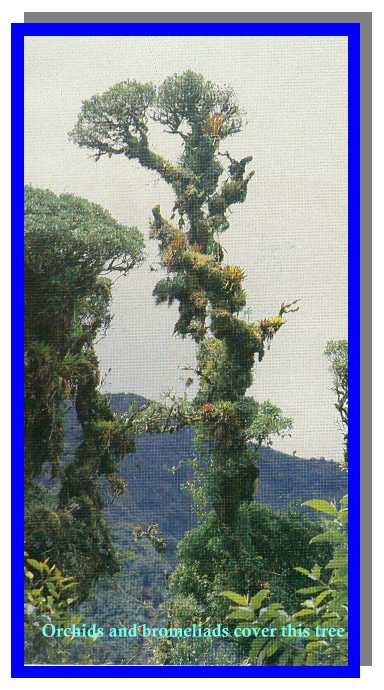

Collecting orchids is possible on every continent except Antarctica, and almost every country in the world. The adaptibility of orchids is amazing and they can live in all of earth's climate zones except the arctic zones. Orchids have adapted so far in one genus in Australia, Rhizanthella gardneri, that it grows and flowers entirely underground so as to conserve on water as it grows in a very harsh and dry desert. If you are in North America you might surmise that a few orchids come from our semi-tropical south Florida and you would be right, but you have just as much chance of finding an orchid growing in New Jersey. There are over 35,000 species of orchids and they are the largest group of flowering plants on earth with one out of seven of every flowering plant being an orchid. They can be found growing on the ground {terrestrial}, attached to a tree {epiphiticly},growing out of water, growing underground, and even growing on a rock {lithophytic}. I have found orchids growing in deserts where there were no trees and in glens of northern deciduos woods that have a hard freeze for 4-5 months a year.
I personally have collected orchids in Ohio, Florida, California, Alberta, Jamaica, Barbados, Puerto Rico, Mexico, Colombia, Paraguay, Bolivia, Peru, and Hawaii. Collecting is best done dressed well, this is because you literally are going to be as close to nature as you have ever been. Trees that have orchids are covered in plants and they give shelter to ants, snakes and all sorts of other creepy crawly things so gloves, long pants, comfortable shoes that can get wet, BUG SPRAY!, a hat, a knife, a machete and a rope are required.
I try to be ecologically sound when I collect and as such I look for broken branches that have fallen around the tree that have plants attached. Or I try to find an area that was just clear cut to make farmland and the orchids trees and bushes are on the ground and soon to die. Or look for downed trees from lightning or rot, if you are in an orchid area chances are good that a walk around will pay off with plants that would die if they were not collected. The trick is to have patience, it is quite hard to see a plant and not take it, but remember that it may be your great grandson's greatest quest to find an orchid in the wild. Carry a camera also because if plants are found in bloom it is best to leave them alone as to give them the opportunity to reproduce. This way you can have a rememberance of the encounter. Most plants will not be in bloom at the same time so do not despair, if there is one species usually there are others. Common sense should play a very big part in the collecting process of plants that are still attached to living trees. If you see only one plant of a type that you want to collect great thought must be taken in how to achieve a division for yourself that does not endanger the mother plant, as these plants can live for many decades, sowing their seeds to the wind so that the species may survive. The best rule of thumb is to leave a healthy plant on a healthy tree alone.
Collecting can be an adventure, in Colombia, I have been searched and questioned by the guerilla forces, FARC, in the state of Cundinamarca, and they were quite unfriendly until they discovered that I had a group of orchids in my possesion. At that point they became quite freindly and they pointed me in a direction that produced many more plants. Another time I was in the woods when I noticed an old man trying to hide behind a tree watching me. This went on for a few minutes before I hailed him and asked what was up. The old man asked if I was interested in "parasitos", or in english parasites, which is how the country people refer to orchids. I said yes and he said to follow him which I did. He took me to the property of an even older gentleman who had not worked his coffee trees for 20 some years and they were full of small reddish mule eared Oncidiums among others. We walked around the property and I found about 6 diferent species that I could pick up off the ground. He then asked me to take him in my car to his house which was a couple of miles down the road. When we arrived I was amazed to see that he had about 25 different soft leaved orchids, Stanhopeas, Gongoras, Kefersteinia, and Soterosanthus. He then proceeded to divide various of the plants while his wife made me a coffee. After he had finished dividing he went and picked oranges from the trees in his yard and filled a large potato sack with them and put them in my trunk. He asked if I would return so that he could take me farther afield where the really different plants could be found. I am still hoping to get back to see him. This man was a true campesino or peon and had no money, but his love for orchids gave him beauty that few can have, even with lots of money.
I was with my family just 2 miles outside of Bogata' on a sunday and we stopped at a restaraunt next to a large hill. After the meal I decided to go up the hill to see what I could see. As I climbed I came to a low copse that I had to scrunch low to get through and I slipped. Looking up to locate where I was my face ran smack into an 5' infloresence of Odontoglossum lindlyii which was growing terrestralithophytically or in other words, in some soil on the side of a large rock. The psuedobulbs were the size of baseballs and as my eyes got used to the shade I noticed I was in a virtual orchid garden. There were twenty of the odontoglossum spread out under this large bush which gave plenty of shade. I also spied Masdevallia tolemensis, two different reed stem epidendrum, a Restrepia species and a Lepanthes all within 15 feet of one another.
If you go out to collect make sure that the area you have chosen has a climate that you can reproduce. I have been to the paramo in Colombia, this is an area that because of it's altitude and it's proximity to an extremely hot and humid area , the llanos, a permanent fog or cloud sits upon it. This happens because of the cool air in the high hills that meets the hot humid air of the llanos below. This is the home of the Telipogon among many others. I know that the first time that I saw the Telipogon's small triangular shape with stripes and bars that I wanted to raise them. Easier said than done. These are some of the world's most dificult orchids to reproduce their environment. The cloud forest is cool with a damp warm and humid mist that bathes them 300 some days of the year. Occasionally they peek out and see the sun for a few hours before the cloud rolls in again. Think long and hard before you take plants, can you offer them an environment that they will like? If not, take pictures and leave them be. There is nothing more discouraging than to collect an orchid and then watch it slowly die away.
If you collect orchids in a foreign country you will need a plant import lisence which is available from the US Government at:
US Department of Agriculture
APHIS, PPQ
4700 River Road, Unit 136
Riverdale, MD 20737-1236 Their number is 301-734-8645.
The US Department of Agriculture has a website that contains information
on how to apply for import and export permits. You can also print the
form needed. The URL address is
www.aphis.usda.gov/ppq/bats/permits.
 Orchids and bromeliads cover trees that have the proper fungus on their barks.
Just Click on the Subject Below and the Section of the page will appear.
Orchids and bromeliads cover trees that have the proper fungus on their barks.
Just Click on the Subject Below and the Section of the page will appear.
| ||||||||
